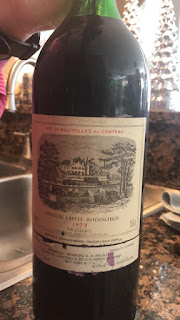Three Real-Life Pairing Challenges
You are eating at a French restaurant in the US. The wine list is good enough to have earned a "Best Of" Award from Wine Spectator -- that's the level below the Grand Award, but it earns the two wine glass logo not surprisingly better than the one wine glass logo. The wine list is dominated by French wines, although there are others. So, in approaching this challenge, imagine that you have in front of you a list of French wines of different styles from different regions. But, no, we are not going to get into specific Chateaux and vintages (young, some age, old is the most we will do). And, of course, the challenge has two diners in it as one would be too easy after nine months of being educated (or bored) with my meandering rants. With that, here we go. For first courses, your table has chosen two not particularly similar, but classic French hors d'oeuvres -- Escargots de Bourgogne and Terrine de Foie Gras. When it comes to wine, these are not necessary complementary
